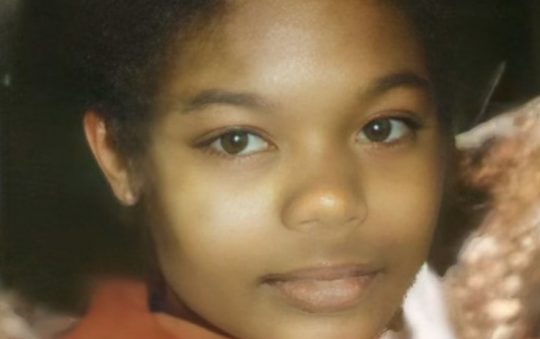Martin Luther King, Jr. Hospital is not dead. There’s plenty of life and resolve left in its supporters to resurrect the beleaguered institution. Local residents and the cadre of long-time loyalists were called together recently by Congresswoman Maxine Waters and newly-elected Congresswoman Laura Richardson.
The gathering was called “A Day of Reconciliation and Renewal.” “Renewal” is clear, but it is not clear whether “reconciliation” referred to Blacks only or with county, state and federal officials who were primarily responsible for the ruination of the hospital. (Or, perhaps “reconciliation” referred to both.) The question is germane because unless Blacks unify and commit to fully restoring the hospital, it will not happen.
Maxine Waters questioned how the county’s alternative plan for the hospital would be implemented. She stressed the need for the community to turn out in huge numbers for the Bielenson Hearing that is required when a facility is closed. Ms. Waters’ plea is somewhat curious, since hundreds, perhaps thousands, turned out for the Bielenson Hearing to protest closing the Trauma Center at King Drew Medical Center (KDMC). The Trauma Center was closed anyway, suggesting that perhaps sustained action, such as closely monitoring the Board of Supervisors’ action and the County Health Department’s policies and practices, as well as focusing on community organizing, would be more effective strategies.
Laura Richardson revved up the audience with the help of the outstanding Hayes Tabernacle CME choir that brought the house to its feet. Richardson proclaimed, “It (Watts-Willowbrook community) is as good as any other community and we will not be pacified.”
Supervisor Yvonne B. Burke showed up. She told the audience that she was very disappointed over losing CMS funding ($200 million) for King Hospital, adding, “Some people will never do the right thing.” Ms. Burke said there were three votes on the Board of Supervisors to keep the hospital open, but they eroded with the 911 call (Ms. Rodriguez writhing on the floor of King’s emergency room.)
Burke feels that Washington, D.C. must know how important the hospital is to this community asserting, “The hospital must stay open.” She also indicated that the community must stay on top of Centers for Medicare and Medicaid Services (CMS), as well as elected officials whose responsibilities include the hospital.
Irene Dyer, director of Planning and Analysis, LA County Department of Health Services (DHS), represented Dr. Chernoff, director of DHS. She said Dr. Chernoff was “sad” when King closed and is “fully committed” to re-opening the hospital. She stated that any hospital seeking to take over King (public or private) must have a history of serving an underserved community. Ms. Dyer also mentioned that some 70 clinics remain open at MLK and an ambulance is on site in case needed.
Local preachers also spoke, emphasizing that the community’s sense of power and influence is critical to restoring MLK Hospital. Their basic message was loud and clear, “Stop feeling powerless….You’ve got to step out of the box.”
The meeting was positive but follow-up is the cornerstone of commitment and that remains to be seen.
Since MLK hospital was found irrevocably out of compliance, there has been a plethora of articles, analyses and commentary on its demise. (Even the LA Times, hypocritically, is calling for the hospital to be reopened.) Opinions run the gamut but virtually all agree that MLK Hospital’s service area—the poorest in Los Angeles—desperately needs quality healthcare.
Many point to poor management and overall leadership as prime culprits in King Hospital’s downward slide. Ironically, the University of California health system is being recommended as an elixir, despite UCLA’s having played a prominent, and questionable, role at MLK Hospital for years. Platitudes, criticism, and analysis aside, the future of the hospital rests heavily with Blacks and Latinos “reconciling” their differences to ensure MLK Hospital regains full service capacity. Reconciliation between middle-class and poorer Blacks will figure prominently in whether the hospital stands or fall.
Incidentally, my colleague, columnist A. Samad, despite referring to her as a “respected sister,” clearly disrespected my daughter, Erin Aubry-Kaplan. He took strong exception to Erin’s article on King Hospital in which she chastised the poor participation (a fact) of the Black middle-class in the struggle to save King, acknowledging that some middle-class did participate at King and are indispensable to its restoration. Samad’s real concern was not the content of Erin’s piece, (He obviously did not read it carefully) but that it ran in the L.A. Times. I regularly criticize the Times’ biased coverage, but Samad’s claim that Blacks should not write in the Times is absurd. Why has he not written about the well known local opportunists who are routinely “fingered” by the L.A. Times as mouthpieces for the Black community? Samad’s harsh criticism of Erin is unfair and unwarranted.
Whether King Hospital rises again depends on many complex factors including political will, new, committed staff accountable, not only to the county, but local residents, funding, and broad community support. It is imperative that Blacks work together across class lines and with other stakeholders to restore the hospital to full service capacity. The challenge is enormous, failing to accept it is unthinkable. Martin Luther King, Jr. Hospital is not dead.
Larry Aubry n can be contacted at e-mail [email protected].






